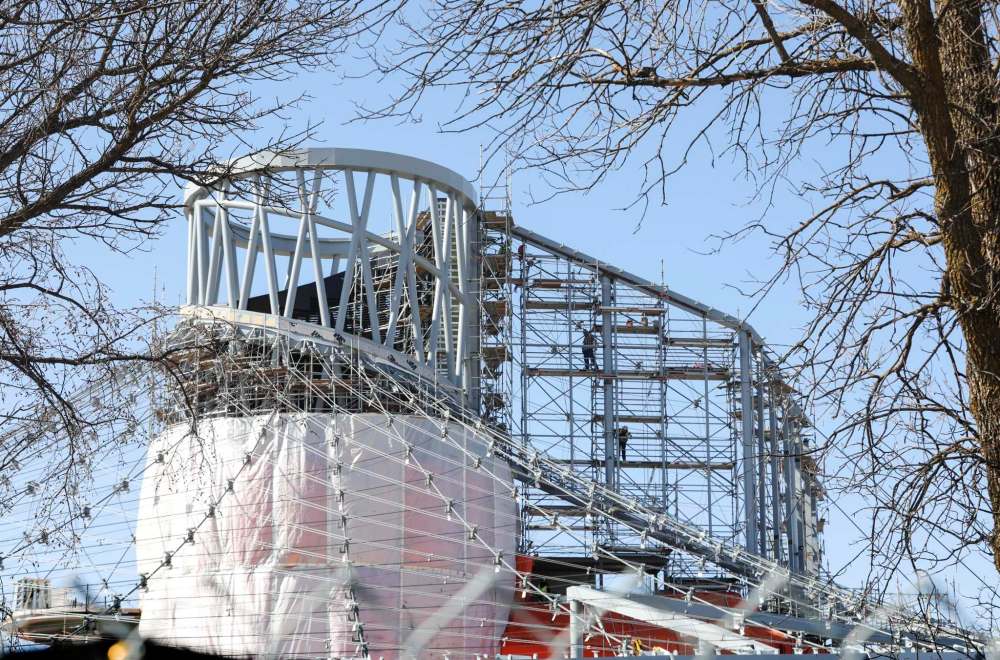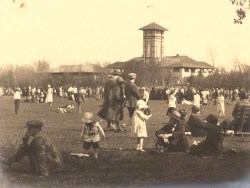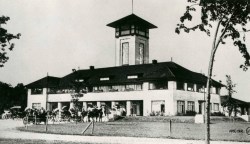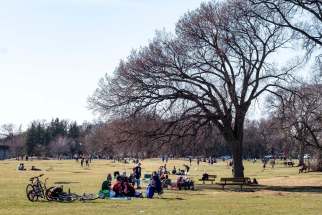Breathing space Assiniboine Park has long provided visitors the chance to commune with nature, escape stresses of urban life
Read this article for free:
or
Already have an account? Log in here »
To continue reading, please subscribe:
Monthly Digital Subscription
$0 for the first 4 weeks*
- Enjoy unlimited reading on winnipegfreepress.com
- Read the E-Edition, our digital replica newspaper
- Access News Break, our award-winning app
- Play interactive puzzles
*No charge for 4 weeks then price increases to the regular rate of $19.00 plus GST every four weeks. Offer available to new and qualified returning subscribers only. Cancel any time.
Monthly Digital Subscription
$4.75/week*
- Enjoy unlimited reading on winnipegfreepress.com
- Read the E-Edition, our digital replica newspaper
- Access News Break, our award-winning app
- Play interactive puzzles
*Billed as $19 plus GST every four weeks. Cancel any time.
To continue reading, please subscribe:
Add Free Press access to your Brandon Sun subscription for only an additional
$1 for the first 4 weeks*
*Your next subscription payment will increase by $1.00 and you will be charged $16.99 plus GST for four weeks. After four weeks, your payment will increase to $23.99 plus GST every four weeks.
Read unlimited articles for free today:
or
Already have an account? Log in here »
Hey there, time traveller!
This article was published 12/04/2021 (1709 days ago), so information in it may no longer be current.
Here’s what I observed on a perfect spring day in Assiniboine Park last week: I saw people biking, jogging and walking their dogs (so many good dogs).
Landmarks
Landmarks is a monthly series that looks at the structures and spaces that shape our city.
I saw the Assiniboine River at low ebb and perennial plantings in the English Garden pushing up toward the April sun.
I saw birdwatchers with binoculars, a group of 20-somethings playing cards, a man tossing bread to some chipper little ground squirrels, and a guy on a tricked-out three-wheeled cycle with a speaker blasting Don’t Stop Believing. This being Winnipeg, I also ran into my husband’s aunt’s best friend.
During the last year of COVID-19, as so many indoor places where Winnipeggers would normally gather were shut down, outdoor public spaces became crucial for mental and physical health. When time seems to have stopped, it helps to see the natural world continue its cycles. When life feels isolated, it’s reassuring to realize you’re still part of a larger community.

For Margaret Redmond, president and CEO of the Assiniboine Park Conservancy, the connections are clear. “This past year, when COVID hit, the park became such a critical space for people, as did all outdoor spaces,” she says. “And I think it was about more than just ‘I need to get out of my house.’
“We know that nature is psychologically important to us as human beings, that animals are psychologically important to us as human beings. The pandemic underlined that for people. They got themselves outside and realized they just felt better, and more and more people made that part of their routine.”
While Assiniboine Park might seem made for this pandemic moment, the connection between public parks and public health goes back to the 1800s, when green spaces were often called “the lungs of a city.” According to Dr. Alan Tate, a professor in the department of landscape architecture at the University of Manitoba, “You can write the history of parks as a history of public health, in many respects.”
Public parks came out of a Victorian zeal for social reform and a belief that large industrial cities threatened the physical, mental and even moral health of their inhabitants. Responding to crowded, noisy and unsanitary living conditions and outbreaks of epidemic diseases such as typhoid and cholera, American landscape architect Frederick Law Olmsted viewed parks, with their reservoirs of sunlight and fresh air, as a remedy to what was considered the city’s “noxious effluvia.”
Spaces like New York City’s Central Park, designed by Olmsted and Calvert Vaux starting in 1857, were also seen as a boon to “brain workers” cooped up in offices, thought to be oppressed by the fast pace and frantic artificiality of urban life and prone to melancholy, malaise and vaguely defined nervous complaints. Parks encouraged active recreation — robust and “manly” team sports were particularly recommended — as well as passive recreation through the serene and restorative contemplation of nature.
The line from Central Park to our own Assiniboine Park is direct. As Tate explains, “The park movement could be identified first with Andrew Jackson Downing and then picked up on by Olmsted via Calvert Vaux, who worked with Jackson Downing. Between them, Olmsted and Vaux became effectively the key figures of the park movement in the Victorian era.”
Frederick G. Todd, who was commissioned to design Assiniboine Park in 1904, apprenticed at the Olmsted firm.
Drawing on Olmsted, Todd worked in the English Landscape style, which used subtle artifice to create an idealized and pastoral vision of nature, with sweeps of lawn, stands of trees and curving pathways. These 403 acres of gently transformed prairie are “currently seen as part of the city,” Tate says, but in the early years, “the park was seen as a place to escape to, apart from the city.”
The park movement believed that parks should be freely open to all classes, a democratic ideal but one that often came with a certain amount of what Tate calls “benign paternalism.” In the 19th and early 20th centuries, it was believed that the mingling of different social groups could help spread the middle-class mores of self-control, sobriety and decorum.
In particular, at a time when the urban working classes had achieved a small measure of leisure time, the powers-that-be fretted they might squander their free hours in brawling, drunkenness or — even worse — political action. As Edwinna von Baeyerin writes in the Canadian Encyclopedia, it was hoped that public parks could be “a place for the landless worker to dissipate dangerous energy that, unchecked, might be channelled into Bolshevism, unionism or intemperance.”
The story of Assiniboine Park, then, becomes a fascinating social history of our town. Retired historian and Parks Canada research manager David Spector, in his affectionate and exhaustively researched book Assiniboine Park: Designing and Developing a People’s Playground, looks not just at the park and its infrastructure but at the myriad ways Winnipeggers have used the space over the decades. He writes about military drills (during the two world wars), church picnics, company outings, cricket matches, Indigenous powwows and even a hippie love-in in 1967.
Spector describes the Anglo-Saxon attitudes and rigidly enforced rules that shaped the early years of the park. He quotes a local publication that in 1913 railed against the “sniffling puritanism” that forbade any kind of games or frivolity on the Christian Sabbath, to the extent that the children’s swings were tied up on Sundays. As the park headed into the mid-20th century, however, Spector sees a move toward multiculturalism and modernity.
“Together we’ll be inspired to conserve our natural world, to make that full connection among humans, animals and plants and what it means to support biodiversity, and build and protect healthy ecosystems and habitats.” – President and CEO of the Assiniboine Park Conservancy Margaret Redmond
In the past few decades, Assiniboine Park has seen ups and downs. At times it has been underfunded and overlooked, and in the 1980s and ‘90s, the Park was falling into forlorn disrepair and declining attendance. Since 2008, the Park has been administered by the Assiniboine Park Conservancy, a not-for-profit independent corporation that relies on government funding but also brings in private ventures. The Conservancy has buffed up the grounds, upgraded existing amenities and started ambitious new projects.
Echoing the initial impetus of the park movement, today’s Assiniboine Park is exploring ideas about what constitutes a healthy society in the 21st century.
For Tate, contemporary parks need to address issues of sustainability. “It’s important to look at a park’s integration into the ecology of a city,” he says.
“In these days of recognition of climate change and the need for sustainable development, we’re beginning to realize more and more the fact that you may put a boundary around a park, but you can’t put a boundary around the natural forces that occur in it.”

For Redmond, this commitment to sustainability is expressed through the Diversity Gardens project, currently under construction, which includes outside gardens as well as the Leaf, a new conservatory that will house two distinct biomes and is being built to LEED Gold specifications.
“This is a space where we can connect people to plants and the conservation stories that plants can tell us, while also recognizing that plants are a unifier across cultures, because all cultures across all time have relied and continue to rely on plants for survival,” Redmond states.
“When we hit on that, we felt, OK, that’s the modern purpose. When we design this place, it needs to be a space that brings our communities together to have those conversations.
“Together we’ll be inspired to conserve our natural world, to make that full connection among humans, animals and plants and what it means to support biodiversity, and build and protect healthy ecosystems and habitats.”
As Redmond concludes: “To my mind this goes back to our vision statement as a Conservancy, which is to create spaces where people can connect to nature and to each other, in a way that inspires us to conserve these spaces for the future.”
alison.gillmor@freepress.mb.ca

Studying at the University of Winnipeg and later Toronto’s York University, Alison Gillmor planned to become an art historian. She ended up catching the journalism bug when she started as visual arts reviewer at the Winnipeg Free Press in 1992.
Our newsroom depends on a growing audience of readers to power our journalism. If you are not a paid reader, please consider becoming a subscriber.
Our newsroom depends on its audience of readers to power our journalism. Thank you for your support.












